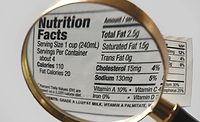FDA: Most Date Labels Are Not Based on Exact Science

According to the U.S. Food and Drug Administration (FDA), Americans (including consumers and the food industry itself) throw out $161 billion worth of food every year. Part of the problem, says the agency, is confusion over the meaning of dates on packaged foods.
- Use Before dates
- Sell By dates
- Expiration dates
To alleviate the confusion, FDA has announced they are supporting a food industry effort to standardize the use of the term “Best if Used By” on its packaged-food labeling if the date is simply related to optimal quality — not safety. Studies how that “Best if Used By” conveys to consumers that the product does not have to be discarded after the date displayed on the package--if the product is stored and kept properly.
“We expect that over time, the number of various date labels will be reduced as industry aligns on this ‘Best if Used By’ terminology,” says Frank Yiannas, FDA's Deputy Commissioner for Food Policy and Response. “This change is already being adopted by many food producers.”
The FDA’s efforts are part of a White House initiative called Winning on Reducing Food Waste. And part of this collaboration between the FDA, the Environmental Protection Agency, and the U.S. Department of Agriculture involves educating consumers on ways to reduce food loss and waste, and how to do it safely without risking illness from consuming spoiled food.
FDA says that most date labels are not based on exact science.
Manufacturers generally apply date labels at their own discretion and for a variety of reasons. The most common is to inform consumers and retailers of the date up to which they can expect the food to retain its desired quality and flavor. The key exception to this general rule is for infant formula products. These products are required to bear a “Use By” date, up to which the manufacturer has confirmed that the product contains no less than a minimum amount of each nutrient identified on the product label and that the product will be of an acceptable quality.
Date labels are generally not required on packaged foods. While manufacturers are prohibited from placing false or misleading information on a label, they are not required to obtain agency approval of the voluntary quality-based date labels they use or specify how they arrived at the date they’ve applied.
According to Kevin Smith, senior advisor for food safety in the FDA’s Center for Food Safety and Applied Nutrition, the “Best if Used By” labels you see on packaged foods relate to the quality of the product, but that predicting when a food will no longer be of adequate quality for consumption is not an exact science.
Smith advises consumers to routinely examine foods in their kitchen cabinets or pantry that are past their “Best if Used By” date to determine if the quality is sufficient for use. If the products have changed noticeably in color, consistency or texture, consumers may want to avoid eating them.
Download the FoodKeeper app for a better understanding of food and beverages storage, and to learn how to maximize the freshness and quality of food products.
More on date labels:
Date Marking: Food Waste Concern Heightens Issue
Sign up for Food Safety Magazine’s bi-weekly emails!
Subscribe to our podcast: Food Safety Matters!
Looking for a reprint of this article?
From high-res PDFs to custom plaques, order your copy today!





